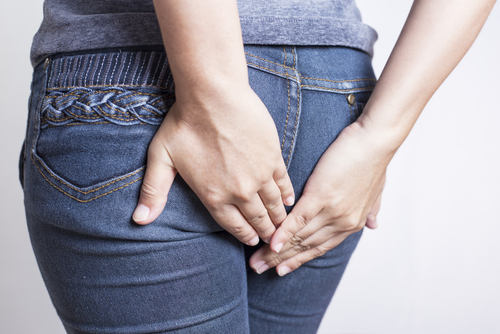A visual examination of your anus may be enough to diagnose hemorrhoids. To confirm the diagnosis, your doctor may check for any abnormalities within the anus via a digital rectal exam. During this exam, your doctor inserts a gloved and lubricated finger into your rectum. If they feel anything abnormal, they may order an additional test called a sigmoidoscopy.
A sigmoidoscopy involves your doctor using a small camera to diagnose an internal hemorrhoid. This small fiber-optic camera, called a sigmoidoscope, fits into a small tube and then inserts into your rectum. From this test, your doctor gets a clear view of the inside of your rectum so that they can examine the hemorrhoid up close.
Treatment for hemorrhoids can be done at home or at a doctor’s office.
Pain Relief
To minimize pain, soak in a warm tub of water for at least 10 minutes every day. You can also sit on a warm water bottle to relieve the pain of external hemorrhoids. If the pain is too much to bear, you can use an over-the-counter medicated suppository, ointment, or cream to relieve the burning and itching.
Dietary Fiber
Home treatment can also include increasing your dietary fiber intake which can minimize the risk of developing hemorrhoids in the future.
Good dietary fiber sources include:
- Whole wheat
- Brown rice
- Oatmeal
- Pears
- Carrots
- Buckwheat
- Bran
- Dietary fiber helps create bulk in the intestines, which softens the stool, making it easier to pass.
If you are constipated, you can also use an over-the-counter fiber supplement to help soften your stool.
Medical Procedures
If home treatments are not helping your case of hemorrhoids, your doctor might recommend getting a rubber band ligation. This procedure involves the doctor cutting off the circulation of the hemorrhoid by placing a rubber band around it. This causes loss of circulation to the hemorrhoid, forcing it to shrink.
Sclerotherapy may also be done by injecting a chemical into the blood vessel directly which causes the hemorrhoid to reduce in size.


